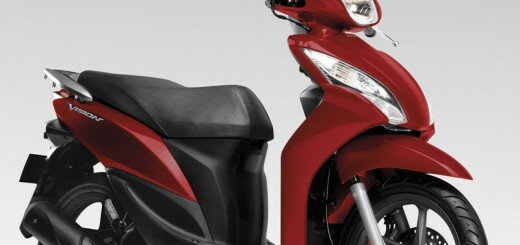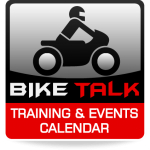Lane splitting in a safe and prudent manner is not illegal in South Africa. Here are a few guidelines to help you as a motorcyclist in executing a lane split safely, and to help the motorist understand why we do it.
The term lane splitting, sometimes known as lane sharing, filtering or white-lining, refers to the process of a motorcyclist riding between lanes of stopped or slower moving traffic or moving between lanes to the front of traffic stopped at a traffic light.
Motorcyclists, who are competent enough riders to lane split, should follow these general guidelines if choosing to lane split:
1) Travel at a speed that is no more than 20 km/h faster than other traffic – danger increases at higher speed differentials.
– A speed differential of 20 km/h or less allows an alert, competent rider enough time to identify and react to most dangerous situations that can occur.
– The greater the speed differential, the less time a rider has to identify and react to a hazard.
2) It is not advisable to lane split when traffic flow is at 50 km/h or faster – danger increases as overall speed increases.
– At just 30 km/h, in the 1 or 2 seconds it takes a rider to identify a hazard, that rider will travel approximately 10 to 20 metres before even starting to take evasive action. Actual reaction (braking or swerving), will take additional time and distance.
– Braking and stopping distance varies greatly based on a multitude of factors (rider, machine and environment).
– As speed increases, crash severity increases.
3) Typically, it is safer to split between the No. 1 and No. 2 lanes than between other lanes.
– Other road users are more accustomed to motorcycles splitting between the Outside and Middle lanes.
– Avoid splitting in lanes near freeway on-ramps and exits.
– Avoid splitting lanes when another motorcycle rider is splitting between other nearby lanes as cars may make additional room for one rider and accidentally reduce space for another.
4) Consider the total environment in which you are splitting, including the width of the lanes, size of surrounding vehicles, as well as roadway, weather, and lighting conditions.
– Some lanes are narrower than others, leaving little room to pass safely. If you can’t fit, don’t split.
– Some vehicles are wider than others – it is not advisable to split near wide trucks. If you can’t fit, don’t split.
– Know the limitations of your motorcycle – wide bars, fairing and bags require more space between vehicles. If you can’t fit, don’t split.
– Avoid splitting on unfamiliar roads to avoid surprises such as poor road surfaces.
– Seams in the asphalt or concrete between lanes can be dangerous if they are wide or uneven.
– Poor visibility, due to darkness or weather conditions, makes it difficult for riders to see road hazards and makes it more difficult for drivers to see you.
– Help drivers see you by wearing brightly coloured protective gear and using high beams during daylight.
5) Be alert and anticipate possible movements by other road users.
– Be very aware of what the cars around you are doing. If a space, or gap, opens up next to your lane, be prepared react accordingly.
– Always be prepared to take evasive action if a vehicle changes lanes.
– Account for inattentive or distracted drivers.
– Riders should not weave back and forth between lanes or ride on top of the line.
– Riders should avoid lingering in blind spots.
– Never ride while impaired by drugs, alcohol or fatigue.
– Constantly scan for changing conditions.
The Four R’s or “Be-Attitudes” of Lane Splitting:
Be Reasonable, be Responsible, be Respectful, be aware of all Roadway and traffic conditions.
– Reasonable means not more than 20 km/h faster than traffic flow and not over 60 km/h.
– You are Responsible for your own safety and decisions.
– Don’t put yourself in dangerous positions.
– If you can’t fit, don’t split.
– Be Respectful – sharing the road goes both ways.
– Don’t rely on loud pipes to keep you safe, loud pipes often startle people and poison the attitude of car drivers toward motorcyclists.
– Other vehicles are not required to make space for motorcycles to lane split.
– Roadways and traffic can be hazardous.
– uneven road surface
– wide trucks
– distracted drivers
– weather conditions
– curves
Disclaimers:
These general guidelines are not guaranteed to keep you safe. Lane splitting should not be performed by inexperienced riders. These guidelines assume a high level of riding competency and experience.
The recommendations contained here are only general guidelines and cannot cover all possible combinations of situations and variables.
Personal Safety: Every rider has ultimate responsibility for his or her own decision making and safety. Riders must be conscious of reducing accident risk at all times. South African law requires all motorcycle riders and passengers wear a helmet that complies with the DOT FMVSS 218 standard.
Risk of getting a ticket: Motorcyclists who lane split are not relieved of the responsibility to obey all existing traffic laws. With respect to possible law enforcement action, keep in mind that it will be up to the discretion of the Law Enforcement Officer to determine if riding behaviour while lane splitting is or was safe and sensible or reckless and dangerous.
You should NOT lane split:
– If you can’t fit.
– At a toll booth.
– If traffic is moving too fast or unpredictably.
– If dangerous road conditions exist – examples
include water or grit on the road, slippery road markings, road construction, uneven road surface, metal grids, etc.
– If you cannot clearly see a way out of the space you’re going into (for example, if a van or SUV is blocking your view).
– Between trucks, buses, vehicle pulling trailers or caravans, and other wide vehicles.
– Around or through curves.
– If you are not fully alert and aware of your surroundings.
– If you are unable to immediately react to changing conditions.
– If you don’t feel comfortable with the situation.
Messages for Other Vehicle Drivers
1) Lane splitting by motorcycles is not illegal in South Africa when done in a safe and sensible manner
and as long as the National Road Traffic Act & Regulations 93 of 1996 are adhered to.
2) Motorists should not take it upon themselves to discourage motorcyclists from lane splitting.
3) Intentionally blocking or hindering a motorcyclist in a way that could cause harm to the rider is illegal.
4) Opening a vehicle door to obstruct a motorcycle is illegal.
5) You can help keep motorcyclists and all road users safe by
• Checking mirrors and blind spots, especially before changing lanes or turning
• Signalling your intentions before changing lanes or merging with traffic
• Allowing more following distance when behind a motorcycle so the motorcyclist has enough time to manoeuvre or stop in an emergency










